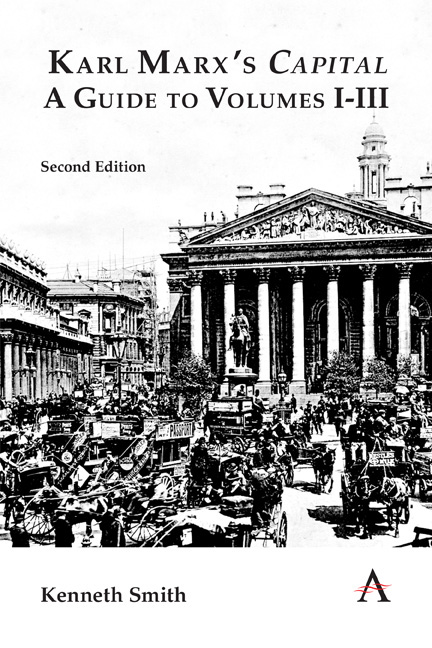Book contents
- Frontmatter
- Dedication
- Contents
- Preface to the Second Edition
- Introduction
- Part I The Development of the Capitalist Mode of Production
- Part II The Capitalist Mode of Production
- Part III The Underdevelopment of the Capitalist Mode of Production
- Part IV The Value Theory of Labour
- Conclusion to Part IV
- Conclusion
- Appendix: On Social Classes
- Notes
- Bibliography
- Index
8 - Extended Reproduction in Capital, Vol. II, Ch. 21, Section 3
Published online by Cambridge University Press: 17 April 2021
- Frontmatter
- Dedication
- Contents
- Preface to the Second Edition
- Introduction
- Part I The Development of the Capitalist Mode of Production
- Part II The Capitalist Mode of Production
- Part III The Underdevelopment of the Capitalist Mode of Production
- Part IV The Value Theory of Labour
- Conclusion to Part IV
- Conclusion
- Appendix: On Social Classes
- Notes
- Bibliography
- Index
Summary
In this chapter we will consider Marx's detailed discussion of extended reproduction in the case of the DI–DII model from what is in fact the last chapter of Capital, Vol. II (Ch. 21, 1974b, 493–527 [1978, 565–99]). However, as before, we are here really only concerned with a very small part of this already short chapter, namely section 3 (1974b, 510–26 [1978, 581–97]), and even then only with the second illustration of his argument (1974b, 518–26 [1978, 589–97]). This is because we will look at Marx's discussion of the precipitation of fixed capital in the first part of Vol. II, Chapter 21 (1974b, 493–509 [1978, 565–81]) in detail in the following chapter, but also because Marx makes a number of false starts in his first attempt to express the essential relations of extended reproduction, all of which were nevertheless included by Engels in Chapter 21, presumably in order to show the stages by which Marx arrived at his first successful formulation of the model for extended reproduction. In this chapter Marx is once again particularly concerned with the material form of the exchanges that take place between DI and DII, and he continues to assume a closed economy model exists and to consider the question of accumulation from the point of view of the total social capital. He is also concerned to effect the transition from simple to extended reproduction merely by a qualitative alteration of the elements of constant and variable capital, surplus value, and means of production and means of consumption, which are already given in the case of simple reproduction shown in Fig. 5. Now, however, he varies one of the conditions he previously posited as being essential for simple reproduction: if simple reproduction can only take place on the basis of a strict equilibrium between production and demand of DI and DII, it is reasonable to suppose that an essential condition of extended reproduction must be that there is some form of disequilibrium between DI and DII.
Marx's discussion of extended reproduction therefore begins with what appear to be a number of failed attempts to formulate a model in which there is a disequilibrium between DI and DII.
- Type
- Chapter
- Information
- Karl Marx's 'Capital': A Guide to Volumes I-III , pp. 60 - 68Publisher: Anthem PressPrint publication year: 2021



